
This peep/stint was photographed at Tule Lake, Corpus
Christi, Texas on August 26, 2004; it is probably a 2CY bird that
is molting from First-Alternate into Definitive-Basic plumage.
The digiscoping in bright light
has washed out the color tones, as the orangy color on the breast-sides
was a bit more obvious than this in real life - the wash was present
on both sides of the breast.
In the image below:-
A = warm wash on breast-sides
B = hint of warm color to edge of very worn tertials (but this could be an artifact)
C = distinctive pattern on old scaps apparently found on many late-summer Little Stints (see pics below)
D = fresh winter mantle and uppermost scaps with what I now presume to be worn blackish alternate scaps overlaying them
E = distinct gape notch
Not apparent in this particular image, but visible in others: fairly long primary projection
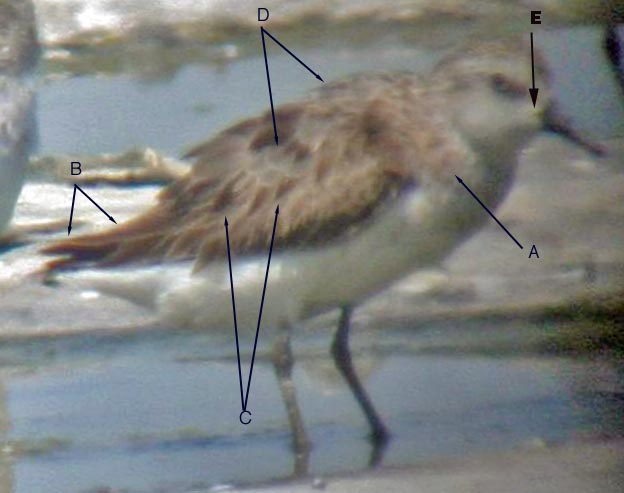
Note the distinct gape notch, and compare it to the sample Little Stint images towards the bottom of the page (also compare it to the nearby Western Sandpipers in these images):
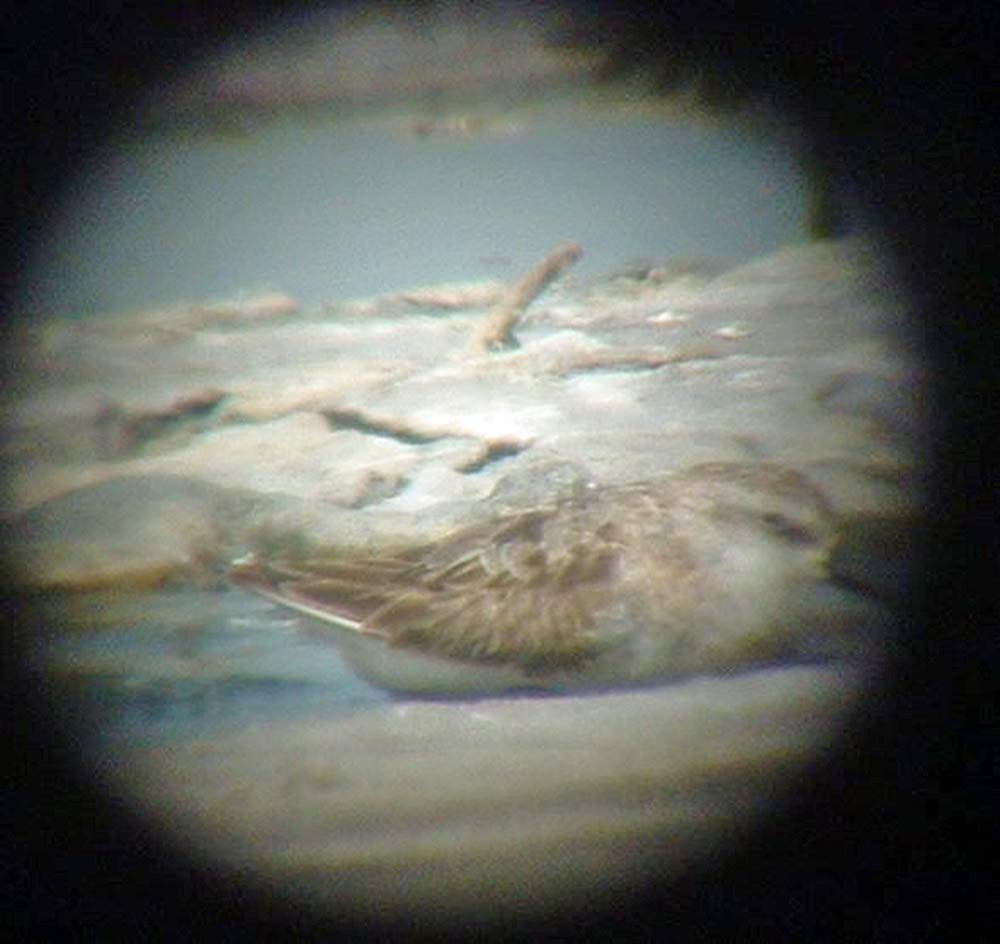
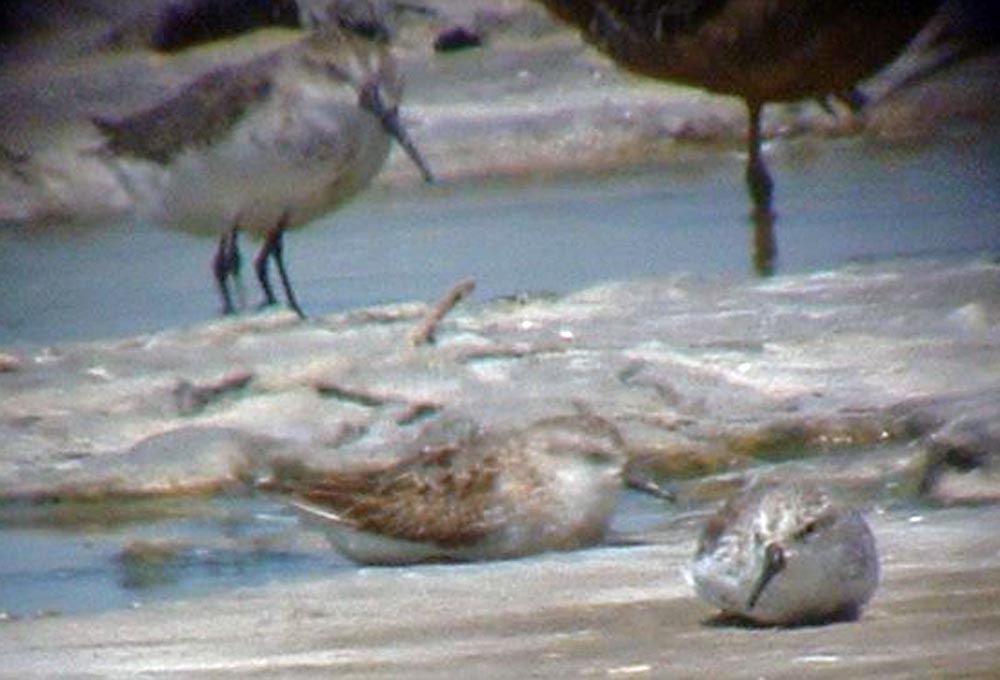
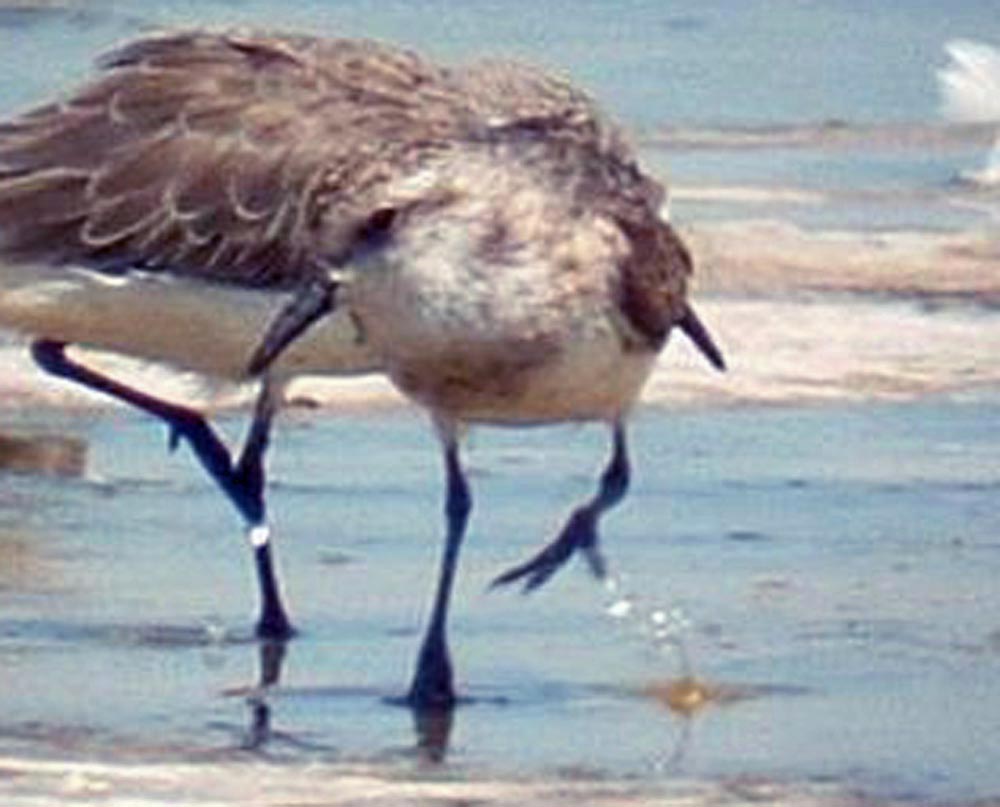
Note the primary projection, and compare it to the sample Little Stint images towards the bottom of the page:
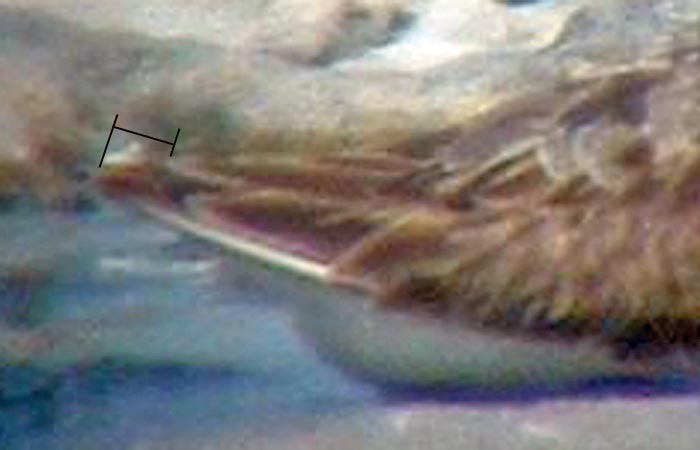
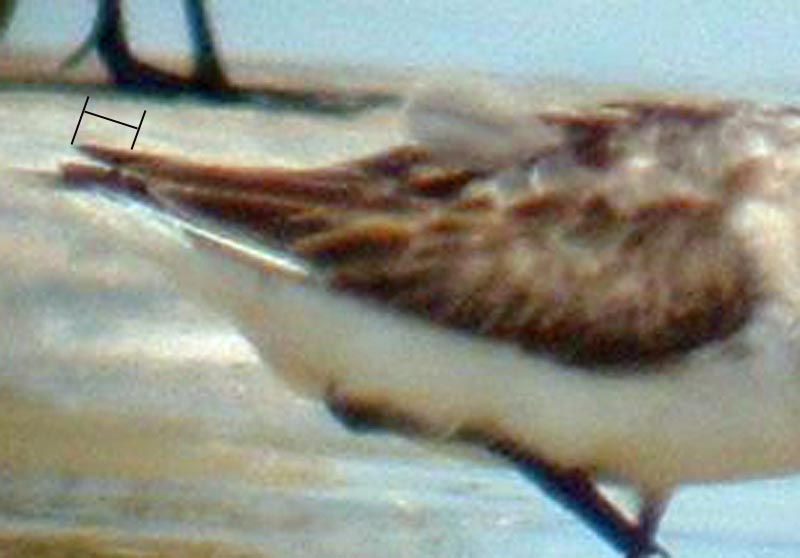

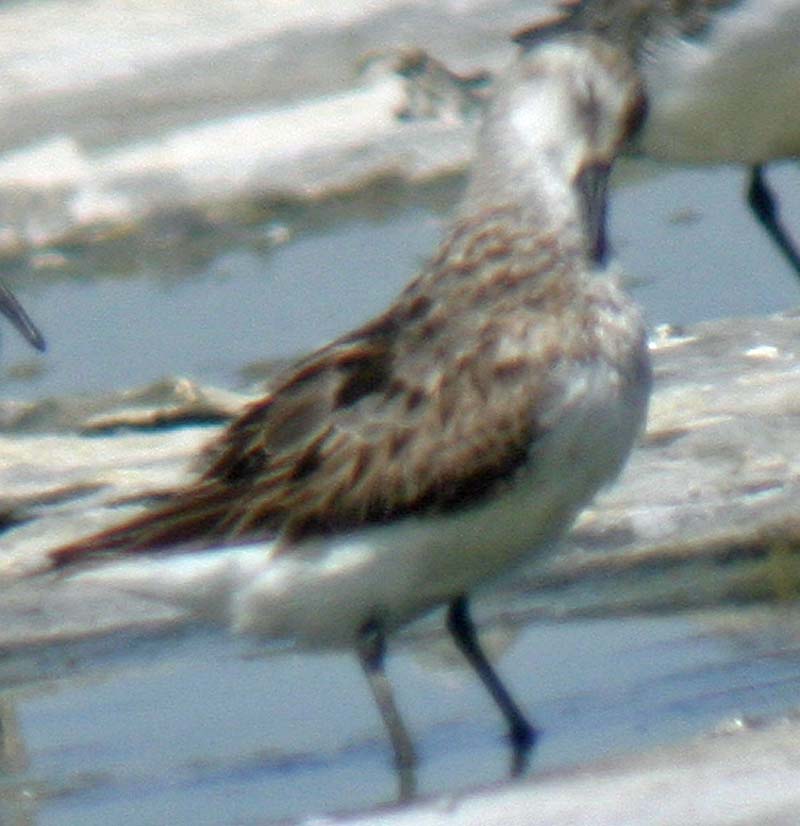
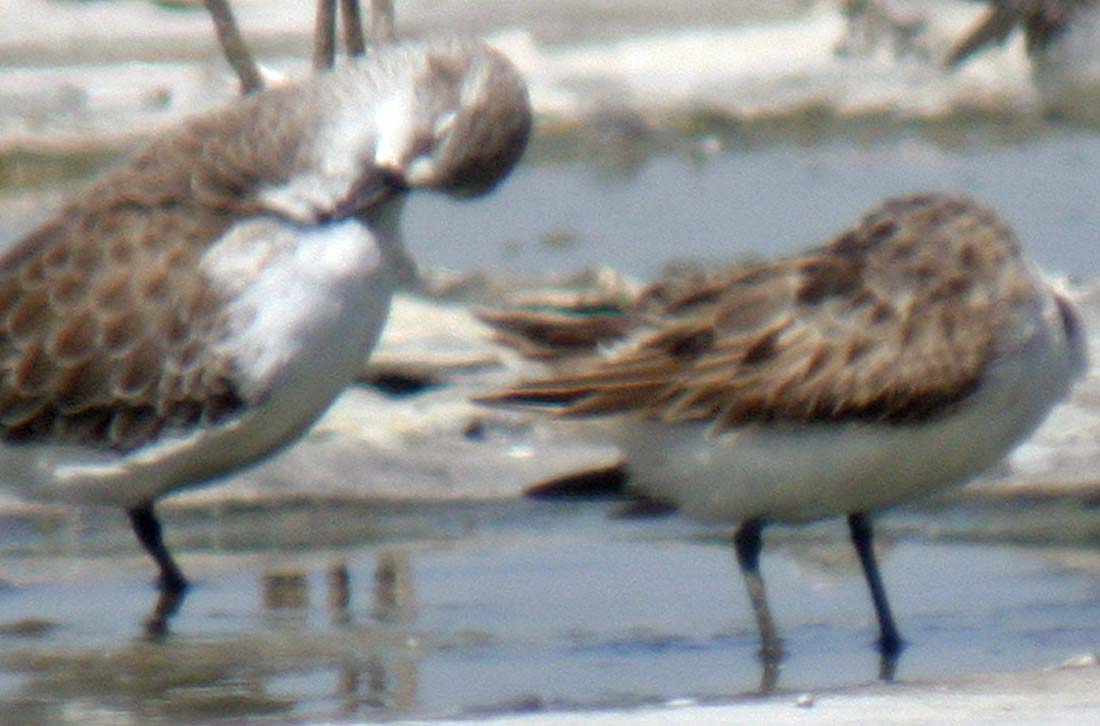
Note the warm wash extending down the nape:

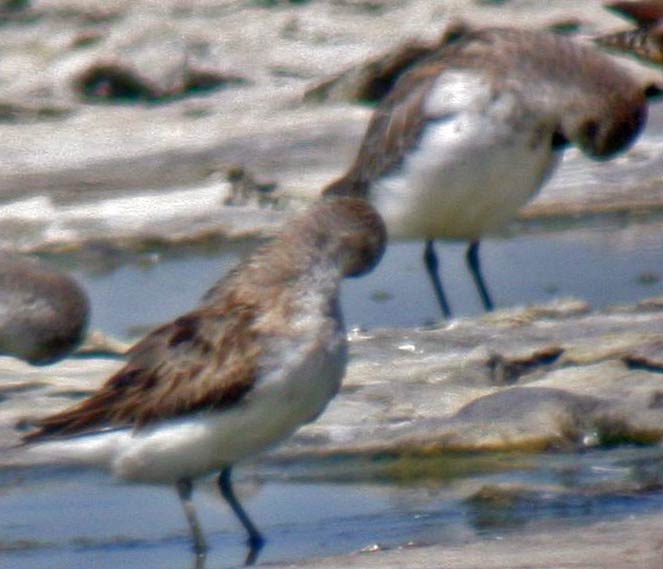
note the crown pattern: pale grayish sides above the supercilium
contrasting with the darker, warmer central crown "stripe"


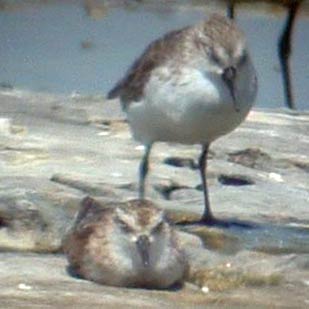
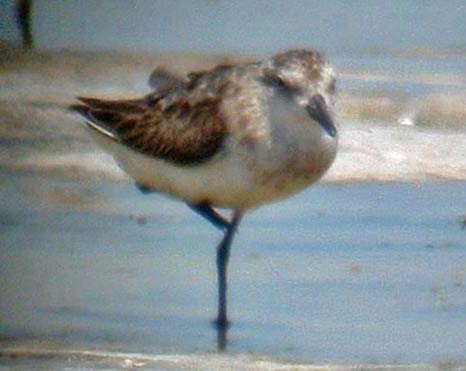
below it is preening while stood infront of a WESA; note the difference in underparts color:
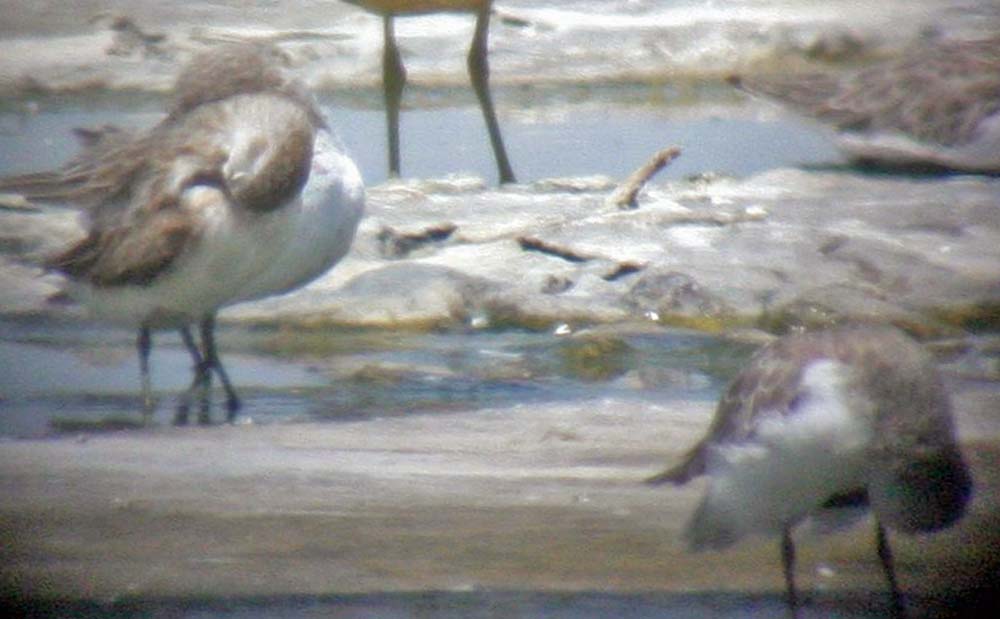
note in the photo below that the bill seems to have a slight droop from this angle, and there is the indication that there is no webbing between the center and outer toes - a Western Sandpiper should show more obvious webbing than this:
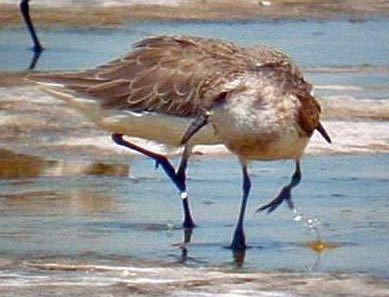
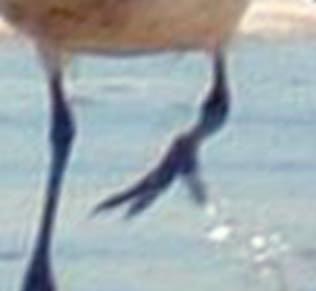
Here are some First-summer/Adult Little Stints molting into winter plumage during mid-late August and early September; here are links to the web sites from which I've borrowed these images - PLEASE email me if you want your pics taken off of this page, and I'll do so as soon as possible (with my apologies):
http://www.oceanwanderers.com/LtStint.html
http://mysite.wanadoo-members.co.uk/somersetbirder/GREECE_trip_report.htm
http://www.hughharrop.com/rarities.php?cat_id=2006
http://www.naturspesialisten.no/article.php?id=494
http://www.pbase.com/clinton62/image/36185034
http://www.pbase.com/clinton62/image/36185010
NOTE that I've deliberately lowered the color depth of these images here (except the first one) to match the poor color definition on the disgiscope pics of the Tule Lake bird; note that all of these late summer birds have at least one retained summer lower scapular that has the same type of distinctive pattern as the Tule Lake bird ("C" in first photo above), and most have the distinctive remnant breast pattern as on the Tule Lake bird:
On this individual the warm wash on the side of the breast is very like that of the Tule Lake bird:
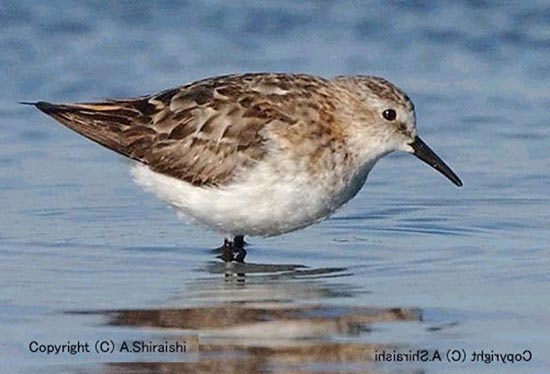
Note on the birds above and below the lores being darker than the upper auricular, as on the Tule Lake bird:
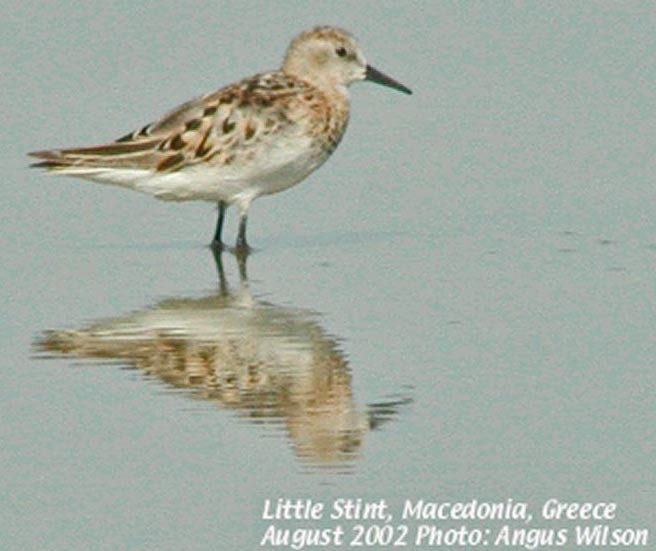
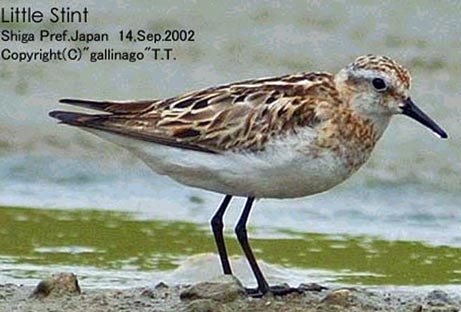
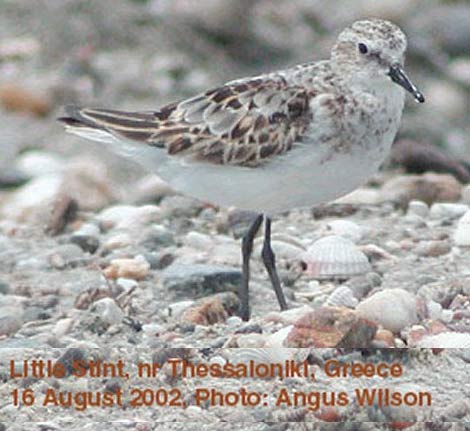
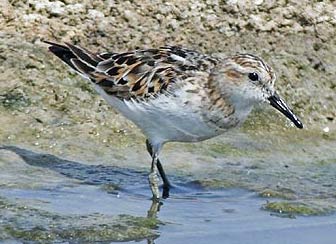
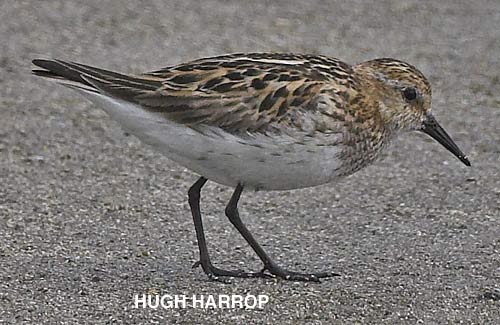
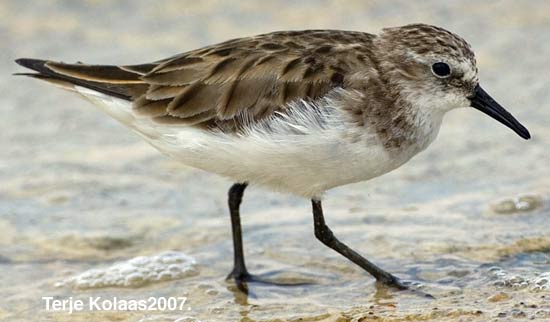
I took the following two photos in Bahrain in March; in the first, compare the crown pattern to the Tule Lake bird:
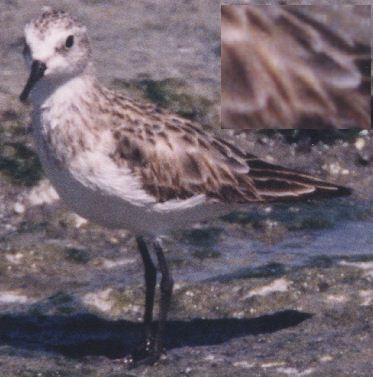
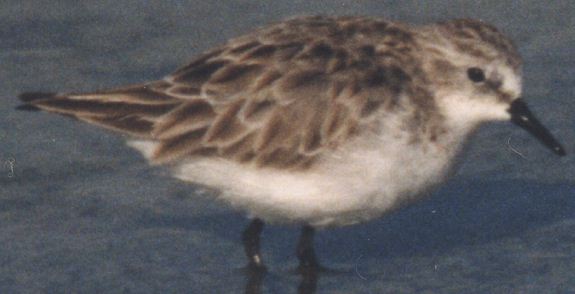
- and here is one (not by me) with a similar bill shape to the Tule Lake bird:
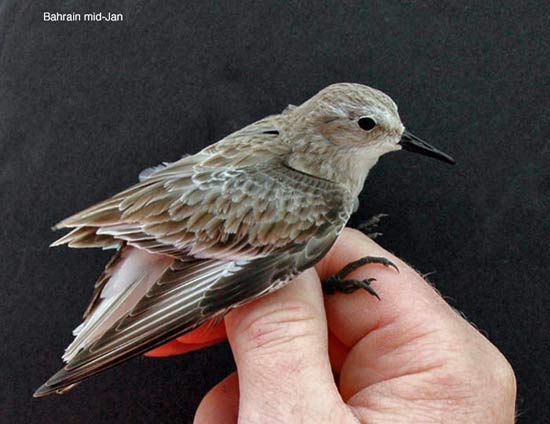
...so is the Tule Lake bird a Little Stint? if not, then what is it?